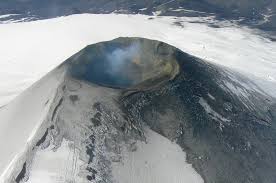Table of Contents
Patagonia’s Mount Villarrica Offers Mountain Climbing Adventure
In 1971, Mount Villarrica in Chile erupted violently, sending lava and mud flows into the valleys and sending residents of the nearby towns fleeing for their lives.
Not anymore. One of Chile’s most active volcanoes, 9,340-foot Mount Villarrica, now has people from around South America and the world flocking to its slopes. The snow-covered peak stands amid the lakes and forests of Chile’s Lake District in scenic northern Patagonia, and is perfect for climbing, even though the mountain still lets off steam regularly and lava often boils in its crater. There are several outfitters in the nearby town of Pucon who lead visitors up the slopes to the steaming crater at a reasonable cost, and there are plenty of other outdoor activities in the region to make a trip to this part of Chile well worth any adventurer’s time and money.
Clothing and Equipment for Mountain Climbing in Chile
Mount Villarrica is a perfect mountain for beginner climbers as it is more of a strenuous hike than a technical climb. That does not mean that anyone should take the journey to the top lightly. Climbers will still wear crampons and carry ice axes, and need to be in good physical shape to hike at a high altitude.
Most outfitters will provide their guests with boots, crampons, and ice axes. Many outfitters will also provide jackets, pants, helmets, and backpacks. Anyone considering a climb up Mount Villarrica should check with an outfitter to see what they provide and what the climber must bring with them. Heavy hiking socks, thermal underwear, a hat, gloves, and non-cotton shirts/jackets are essential. Climbers should dress in layers; if they get hot, they can remove a layer and put it in their backpack. Summertime, which occurs from December to March in Pucon, Chile, is the peak time to climb Villarrica.
The Way Up Mount Villarrica
Climbers will take a bus or van part way up the mountain to a ski lift. They will ride the ski lift a little farther up the mountain, and then begin the trek to the top. The beginning of the climb is over rocks and dusty trails. When climbers reach the snow line, they put on their crampons and carry their ice axes. Guides will give a brief lesson on how to use the ice axe to keep from sliding should one slip and fall.
The climb gets steeper as climbers get higher. Even when the skies are clear, it is not unusual for strong winds to buffet parts of the mountain. Mountain guides will have their groups stop mid-way to break for lunch, and then continue on. At one point, the slope becomes very steep, and the lines of climbers will traverse back and forth across that section, slowly making their way toward the summit.
At probably less than 1,000 feet from the summit, climbers will take a break and remove their backpacks, leaving them in a pile while they continue to the top of the mountain. At an altitude of 9,340 feet, climbers will be greeted with a spectacular view of the Chilean countryside and a jaw-dropping look into the crater of an active volcano. A strong smell of sulphur, along with occasional rumbles and hisses from the crater, will also greet climbers as they near the summit.
The Slide Down
As amazing as it is to stand on top of a volcano, the smell keeps climbers from lingering too long at the summit. Climbers will make their way back down to where they left their backpacks, and then the real fun begins – sliding down the mountain. The first slide takes place in a trough that winds its way down a steep part of the mountain. Climbers use their ice axes to help control their speed, and will soon shoot out of the trough and onto an open slope, where they slide for a few hundred feet more before stopping and hiking over to the next area where they can continue sliding down the mountain.
Eventually the snow ends and rock begins, so climbers will pick themselves up and hike back to their waiting bus or van to be taken back to Pucon. Once in town, plenty of good restaurants await, where climbers can celebrate their accomplishment with good Chilean beef and wine.

Avid traveler, journalist and writer, he moved away from his native France back in 2006 and settled in Chile. After visiting the country North to South, learning extensively about its culture, History, gastronomy, Thomas started to work as a tour guide. He liked it so much that he ended up creating his own tour agency in Valparaiso, where he lives today. You can visit my site at: https://chileprivatetours.com/
